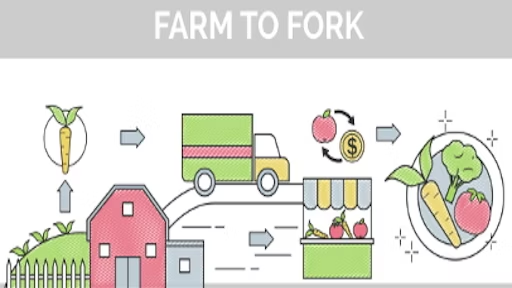Introduction
The food and beverage (F&B) sector is one of the most complex supply networks on the planet. Raw ingredients must be sourced at the right quality, processed under strict safety regulations, shipped through temperature-controlled logistics, and finally plated or shelved for the end customer—often within days. Spreadsheets and paper trails can’t keep pace with these demands. That’s where modern food and beverage software steps in, stitching every stage together with real-time data, automation, and AI-driven insights.
What Is Food & Beverage Software?
At its core, an F&B platform is a suite of industry-specific tools that unite enterprise resource planning (ERP), manufacturing execution, quality management, and customer-facing applications under one digital roof. Unlike generic ERPs, these systems “speak the language” of shelf life, recipe precision, allergen tracking, and regulatory compliance, offering pre-built modules that address the sector’s unique pain points right out of the box.
Essential Modules That Drive Efficiency
Inventory and Recipe Management
Accurate lot tracking and dynamic bills of material ensure you always know the exact cost and composition of every product, down to the gram. Automatic alerts flag short expiration windows or potential allergen cross-contamination, preventing costly recalls and waste.
Quality, Safety, and Compliance
Built-in HACCP workflows, digital checklists, and audit trails provide end-to-end traceability. When inspectors arrive—or a customer questions an ingredient—you can retrieve production records in seconds instead of hours.
Demand Forecasting and Procurement
Machine-learning algorithms analyze sales velocity, seasonal patterns, and even weather forecasts to predict demand. Procurement modules then generate optimal purchase orders, protecting margins by avoiding both stock-outs and over-buying perishable goods.
Production Scheduling and OEE
Drag-and-drop scheduling boards balance line changeovers with labor availability, while real-time Overall Equipment Effectiveness (OEE) dashboards highlight bottlenecks before they cripple throughput.
Omnichannel POS and Ecommerce Integration
Whether you run a craft brewery taproom, a regional supermarket chain, or a cloud kitchen network, seamless integration with POS and online ordering ensures inventory, pricing, and promotions stay synchronized across every customer touchpoint.
Benefits Across the Value Chain
Manufacturers and Processors can trim raw-material costs through precise recipe scaling, while automated quality checks reduce giveaway and rework. Distributors and Wholesalers gain real-time visibility into warehouse stock and delivery routes, improving fill rates and on-time performance. Restaurants and Retailers capitalize on menu engineering tools and shelf-life analytics to increase profit per plate, curb shrinkage, and uphold food-safety standards.
How to Choose the Right Platform
- Industry Fit – Look for reference customers that mirror your operation size (microbrewery, mid-market processor, or global conglomerate) and product category (beverages, dairy, confectionery, ready meals).
- Scalability and Cloud Readiness – Multi-site operators benefit from SaaS architectures that roll out updates instantly and support unlimited users without new hardware.
- Integration Ecosystem – Native connectors to common accounting, CRM, WMS, and ecommerce tools reduce implementation risk and keep TCO in check.
- Advanced Analytics – Choose vendors that embed AI for predictive maintenance, spoilage forecasting, and dynamic pricing, not just static dashboards.
- Support and Regulatory Expertise – A partner who follows FDA, USDA, EU, and local guidelines can help you navigate evolving rules with minimal disruption.
Best Practices for Implementation
- Secure Executive Sponsorship – Digital transformation success hinges on C-suite commitment to funding, culture change, and cross-department collaboration.
- Clean Your Data First – Standardize units, purge duplicates, and validate supplier records; bad data migrated into a new system simply creates expensive chaos.
- Adopt a Phased Rollout – Start with a pilot plant or flagship store, fine-tune workflows, then cascade to additional sites once KPIs improve.
- Invest in Training and Change Management – Chefs, quality technicians, and drivers need role-based dashboards that speak their language, not generic ERP jargon.
- Measure ROI Continually – Track metrics such as inventory turnover, yield percentage, order accuracy, and customer satisfaction to prove (and improve) value.
Future Trends Shaping F&B Technology
- Artificial Intelligence and Computer Vision – Cameras paired with AI can detect mislabeled packaging or foreign objects at line speed, slashing manual inspection costs.
- Internet of Things (IoT) – Smart sensors in silos, cold rooms, and transport vehicles provide minute-by-minute temperature and humidity readings, enabling proactive quality control.
- Sustainability Dashboards – Carbon-footprint calculators and waste-reduction analytics help brands meet ESG targets and satisfy increasingly eco-conscious consumers.
- Blockchain Traceability – Immutable ledgers promise farm-to-fork transparency, allowing diners to confirm ethical sourcing with a smartphone scan.
- Augmented Reality (AR) Maintenance – Technicians wearing AR glasses receive overlay instructions and remote expert support, cutting downtime during critical equipment failures.
Conclusion: Putting Technology on the Menu
In an industry where margins average just 2–5 percent and a single recall can cripple brand reputation, digital agility is no longer optional—it’s a competitive necessity. The right platform unifies data, automates compliance, and frees your team to innovate flavorful products rather than firefight paperwork.
For a deeper dive—including vendor comparisons, implementation checklists, and success stories—explore our comprehensive overview on Food and beverage software
By turning disparate processes into a synchronized digital ecosystem, forward-thinking producers, distributors, and hospitality leaders can serve up quality, safety, and profitability on every plate they present.


